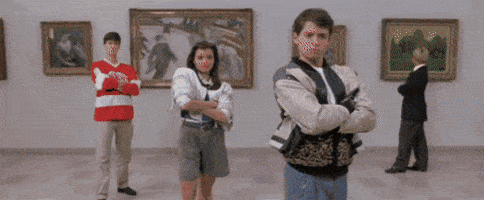| A 25" telescope like ours. Not ours--notice lack of mirrorage--but the general type. |
 |
| The right image is HST's telescope, the left is what we saw, more or less. M82. |
I brought my star chart, so anything that was up, we could find. My dad likes a go-to telescope, because you can just plug the thing you want to look at in and the computer finds the thing you want to look at...but I'm not sure any of PARI's (relatively) portable telescopes have them. Besides! A go-to computer means you never *really* learn the sky. You may or may not be able to pick out constellations. (I know Corvus and Lyra now! Although I think they're making Draco up. I know where he is...but no, I can't see it. Hiss.) You almost certainly can't star hop, and that's...kind of fun, really.
What's star hopping? Here's a star chart from April. If you wanted to find the Orion Nebula, you can know (from a better star chart, or maybe you just know) that it's a bit below Orion's belt. You probably can't see it, but you can see Orion and his belt. You know which star it's "below" and which way Orion appears in the sky. In your telescope's finder window/scope/along the barrel/in the mirror you can line up that star and then go look in your eyepiece. From there, you can move your telescope "down" (while looking in the eyepiece) until you see the thing you're looking for, at which point you can play around with lenses, filters, whatever.
We starhopped to M81, M82, the ring nebula, the whirlpool galaxy, and a handful of globular clusters. The whirlpool galaxy--M51--is cool, because you can *tell* it's a spiral, even in a ground-based telescope, even when it looks a little like this, only fainter and blurrier and you could only sort of see it like this out of the corner of your eye:
I thought it looked a little like a rose. Lovely. Truly.
BUT! That's not the only thing up! We also saw the planets that are up--Mars, Jupiter, Saturn--and saw Mars in great detail. I should clarify: Detail on mars from a ground based telescope looks less like the hubble photos you've seen and more like this sketch--not mine, we couldn't see a polar cap:
Mind, this is a pretty clear sketch. You can see a roundish disk and some dark blobby bits on it.
Saturn was fun--we could see the rings, and the planet, and three little moons. Jupiter, we saw three or four moons--one could've been a nearby star--and they had moved from the previous night. Saturn's had too: night before last, we saw four for sure, in a smaller telescope.
The moon...was glorious. I did photograph that.
First, here's a photo from the University of Alabama's 6" (I think) Dobsonian telescope. The moon was a gibbous, it just peeked out of the frame:
 |
| Good detail, nice craters along the terminator, Tycho nice and clear... |
 |
| And here's last night--It's only a crescent, Tycho wasn't up. |
Ehrmagerd. (You might be able to drag the images into your address bar to see them larger, or look at my photo on Facebook.) We saw the moon in so much detail, I didn't even know that was possible...because I've never looked at it through a telescope that large. (This was easily the biggest telescope I've ever dealt with, by at least 3".) I think my comment was "Wow".
Oh, and also for comparison, here's the moon through my little refractor during the eclipse last fall. The blue and yellow around the left edge of the moon are artefacts of the telescope, called "Chromatic aberration". It's why most telescopes use mirrors to gather and focus the light, which are typically better about not introducing colour weirdness. It's because light travels slower in a medium, like a lens, and different frequencies (colours) are impacted differently. The photographs above, as well as most astrophotography you've seen, come from mirror telescopes like Hubble or the 25" dobsonian.
 |
| Again, you can see Tycho and the maria...and that's it. |
Also, the guy interns drove down to the vegetable stand at lunch and got some fresh veggies to throw in a crock pot with some chicken. I contributed chicken broth and some spices, my roommate some spices and some rosemary. It's nice to live somewhere where, if people cook, they're willing to make enough for everyone on the grounds that you'll reciprocate next time--I made mac and cheese on Monday and shared with anyone who hadn't eaten.
Tomorrow, I'm not working. Tomorrow, I'm off to UNCA orientation! woo!






